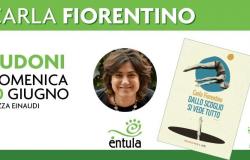(by Maria Emilia Bonaccorso) STEFANO ARDITO K2. THE MOUNTAIN OF MYTH (Solferino, pp. 368, 20.90 Euros).
Seventy years ago, on 31 July 1954, two mountaineers arriving from Italy hugged on the 8611 meters of K2, the second peak on Earth. Lino Lacedelli was born in Cortina d’Ampezzo, Achille Compagnoni, originally from the upper Valtellina, is a mountain guide on the Matterhorn.
The victory does not belong only to them, but also to the expedition leader Ardito Desio, to the Italian Alpine Club who wanted and financed the undertaking, to the other mountaineers starting with Walter Bonatti and the Pakistani porter Amir Mahdi who faced a freezing bivouac at 8100 meters to bring oxygen to the leading team. And of course to Mario Puchoz, one of the members of the group, killed by altitude sickness a month before the victory. The conquest of K2 is not only celebrated in the Alps.
When the news reaches Italy, Parliament interrupts its work, newspapers open with nine-column headlines, church bells ring from Turin to Trapani. In September, when the mountaineers land in Genoa, they are awaited by 40,000 people. Even today, throughout Italy, hundreds of bars, hotels and restaurants are dedicated to K2. Stefano Ardito, journalist and mountaineering historian, has traveled the paths and glaciers of the Karakorum several times, and has interviewed Desio, Lacedelli, Bonatti and dozens of other protagonists of the history of K2. In his book he talks about the search for funds, the help of Prime Minister Alcide De Gasperi who saw the 1954 expedition as an opportunity to relaunch the image of Italy, the mobilization by dozens of companies that supply food, clothing and equipment.
After returning to his homeland, once the celebrations were over, a phase of controversy began which was destined to last fifty years, and which reached the courtroom several times. Bonatti, who accuses Desio, Compagnoni, Lacedelli and the CAI of having hidden his sacrifice, will see his positions accepted only in 2008. Stefano Ardito’s story begins with the Pistoia Jesuit Ippolito Desideri who visits Tibet in the eighteenth century, and continues with the maps drawn in the middle of the following century by the British, who feared a Russian invasion of India.
Mountaineering arrived in 1909 thanks to the Duke of Abruzzi, the photographer Vittorio Sella and their guides from Courmayeur, then 3 Stars and Stripes expeditions (1938, 1939 and 1953) preceded the Italian victory. In the following decades, K2 was climbed many more times, and other itineraries were traced on its sides. It is a story where the best mountaineers in the world parade but there is no shortage of tragedies: almost 200 victims. In recent years, as has already happened on Everest, the second mountain on Earth has become the prerogative of record hunters and commercial expeditions.
There is also a lot of science on K2, and it is often tricolor. The first team of scientists (topographers, glaciologists, scholars of terrestrial magnetism) visited the area in 1913 together with Filippo De Filippi. Other researchers arrive in 1929 with the Duke of Aosta. Italian science returned to the Karakorum in 2004, when a team of researchers accompanied the two expeditions (one national, the other conceived in Cortina) that took ten Italians to the summit. In the following years, Italy and the Ev-K2-CNR Committee began an important collaboration with the Central Karakorum National Park. Even in these days, together with the expedition of Italian and Pakistani mountaineers who aim to reach the peak in 70 years, a group of glaciologists is walking towards the base of K2.
Reproduction reserved © Copyright ANSA






